
Brixton Hill is the name given to a two-thirds of a mile (1 km) section of road between Brixton and Streatham Hill in south London, England.
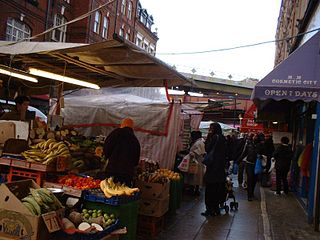
Brixton Market comprises a street market in the centre of Brixton, south London, and the adjacent covered market areas in nearby arcades Reliance Arcade, Market Row and Granville Arcade.

The 1981 Brixton riot, or Brixton uprising, was a series of clashes between mainly black youths and the Metropolitan Police in Brixton, London, between 10 and 12 April 1981. It resulted from racist discrimination against the black community by the mainly white police, especially the police's increased use of stop-and-search in the area, and ongoing tensions resulting from the deaths of 13 black teenagers and young adults in the suspicious New Cross house fire that January. The main riot on 11 April, dubbed "Bloody Saturday" by Time magazine, resulted in 279 injuries to police and 45 injuries to members of the public; over a hundred vehicles were burned, including 56 police vehicles; almost 150 buildings were damaged, thirty of which were burnt out, and many shops were looted. There were 82 arrests. Reports suggested that up to 5,000 people were involved. The Brixton riot was followed by similar riots in July in many other English cities and towns. The Thatcher government commissioned an inquiry, which resulted in the Scarman Report.
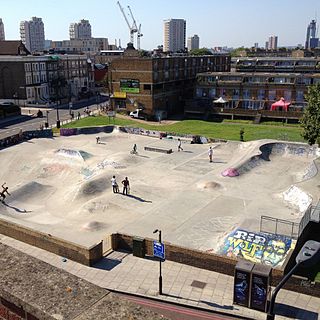
Stockwell Skatepark, also known as "Brixton Bowls" or "Brixton Beach", is a concrete skatepark situated on the corner of Stockwell Park Walk and Stockwell Road in the borough of Lambeth in South London. Construction of the park was funded by the Lambeth Borough Council in 1978 and it has been used since then by skateboarders, BMXers, rollerskaters, and assorted other self-propelled wheeled vehicle practitioners. The park is unsupervised and free to use at all hours, and has remained consistently popular throughout its life, both with locals and with visitors from all over the world.
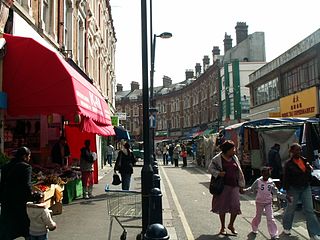
Electric Avenue is a street in Brixton, London built in 1888. It was the first market street to be lit by electric lights. Today, Electric Avenue contains national retail chains, plus various local food and housewares retailers. It also hosts a part of Brixton Market, which specialises in selling African, Caribbean, South American, and South Asian products. It is located just around the corner from Brixton Underground station (1972). The street originally had cast iron Victorian canopies over the pavement, which were damaged in World War 2 and removed in the 1980s.

Leighton Rhett Radford "Darcus" Howe was a British broadcaster, writer and racial justice campaigner. Originally from Trinidad, Howe arrived in England as a teenager in 1961, intending to study law and settling in London. There he joined the British Black Panthers, a group named in sympathy with the US Black Panther Party.
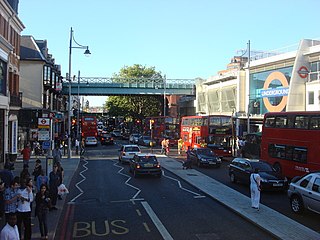
Brixton Road is a road in the London Borough of Lambeth, leading from the Oval at Kennington to Brixton, where it forms the high street and then forks into Effra Road and Brixton Hill at St Matthew's church at the junction with Acre Lane and Coldharbour Lane. Brixton Market is located in Electric Avenue near Brixton Underground station and in a network of covered arcades adjacent to the two railway viaducts. The market arcades were declared listed buildings in 2009 following controversial proposals by Lambeth Council to replace them with a large US-style mall. The former "Brixton Oval" is at the southern end with Lambeth Town Hall, the Ritzy Cinema, the Brixton Tate Library and St Matthew's church. The space was renamed Windrush Square in 2010, in honour of the area's early Caribbean migrants and the HMT Empire Windrush, which in 1948 brought 492 passengers from Jamaica to London.

Railton Road runs between Brixton and Herne Hill in the London Borough of Lambeth. The road is designated the B223. At the northern end of Railton Road it becomes Atlantic Road, linking to Brixton Road at a junction where the Brixton tube station is located. At the southern end is Herne Hill railway station.

The A203 is a primary A road in South London.

Dread Beat an' Blood is the debut album by British reggae band Poet and the Roots released in 1978 on the Front Line label. It was produced by Vivian Weathers and Linton Kwesi Johnson. The "Poet" is dub poet Johnson and "the Roots" are Dennis Bovell, Lloyd "Jah Bunny" Donaldson, Desmond Craig, Winston Curniffe, Everald Forrest, Floyd Lawson, John Varnom, Lila Weathers and Vivian Weathers. Vivian Weathers and Winston Curniffe were school friends of Johnson's. They all attended Tulse Hill Secondary School. Most of the tracks are based on poems that first appeared in Johnson's 1975 book of poetry Dread Beat an' Blood.
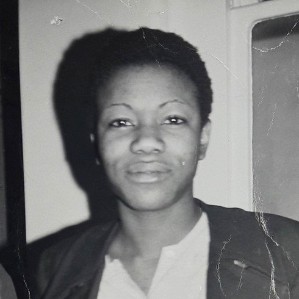
Olive Elaine Morris was a Jamaican-born British-based community leader and activist in the feminist, black nationalist, and squatters' rights campaigns of the 1970s. At the age of 17, she claimed she was assaulted by Metropolitan Police officers following an incident involving a Nigerian diplomat in Brixton, South London. She joined the British Black Panthers, becoming a Marxist–Leninist communist and a radical feminist. She squatted buildings on Railton Road in Brixton; one hosted Sabarr Books and later became the 121 Centre, another was used as offices by the Race Today collective. Morris became a key organiser in the Black Women's Movement in the United Kingdom, co-founding the Brixton Black Women's Group and the Organisation of Women of African and Asian Descent in London.
Windthorst is a village in the Canadian province of Saskatchewan within the Rural Municipality of Chester No. 125 and Census Division No. 5. It is accessed from Highway 48.

The George IV was a public house and concert and dance venue at 144 Brixton Hill, in Brixton, London. At the junction with Waterworks Road, the venue in 2007 became the Southside Bar and later the Music Bar. Following its closure in 2012, it became a branch of Tesco.

Christ Church on Brixton Road in Lambeth SW9 is an Art Nouveau and Byzantine Revival Grade II* listed building built in 1902 by Arthur Beresford Pite for his brother-in-law, Rev William Mowll. The foundation stone of the new church was laid on 13 December 1898 by Princess Helena, and the old church was demolished in 1899. The foundation stone, by Edward Johnston, was cut by Eric Gill in 1902. The church was consecrated by Edward Talbot, the Bishop of Rochester, on 5 December 1902. There is a prominent clock on the exterior of church, probably erected at the time of its construction. The outside pulpit in the south-west corner was designed by Weir, Burrows and Weir and was dedicated on 3 November 1907.
Race Today was a monthly British political magazine. Launched in 1969 by the Institute of Race Relations, it was from 1973 published by the Race Today Collective, which included figures such as Darcus Howe, Farrukh Dhondy, Linton Kwesi Johnson, Leila Hassan and Jean Ambrose. The magazine was a leading organ of Black politics in 1970s Britain; publication ended in 1988.
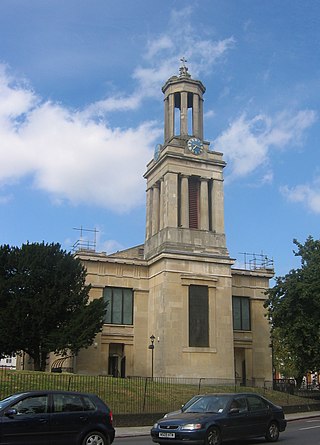
St Matthew's Church is a Church of England church in the London Borough of Lambeth. It is a Grade II* listed building which occupies a prominent position at the junction of Brixton Road, Brixton Hill and Effra Road. The church was constructed following the Church Building Act 1818 and was consecrated in 1824.
The London Black Revolutionaries is a revolutionary socialist British political organisation centred in London. The organisation's membership is rumoured to be a mix of Caribbean and South Asian youth, who had been part of an oppositional faction and split of more than 550 members from the Socialist Workers Party (UK) in 2012–13. Its closed membership consists primarily of Black British and British Asian youths, who define themselves as a strictly working-class, grassroots organisation based on anti-racist, anti-fascist, anti-homophobic and anti-sexist principles. Rejecting pacifism, the Black Revolutionaries take a militant approach to their activities, employing direct action as a tactic. The organisation is said to be primarily based in Brixton, South London.

Platforms Piece consists of four bronze sculptures of commuters at Brixton railway station by the British artist Kevin Atherton. The original three sculptures were completed in 1986 with a fourth statue, Joy II, added in 2023.
The British Black Panthers (BBP) or the British Black Panther movement (BPM) was a Black Power organisation in the United Kingdom that fought for the rights of black people and racial minorities in the country. The BBP were inspired by the US Black Panther Party, though they were unaffiliated with them. The British Panthers adopted the principle of political blackness, which included activists of black as well as South Asian origin. The movement started in 1968 and lasted until around 1973.
Leila Hassan Howe is a British editor and activist, who was a founding member of the Race Today Collective in 1973, having previously worked for the Institute of Race Relations. She became editor of the Race Today journal in 1986. Hassan was also a member of the Black Unity and Freedom Party. She is co-editor of a collection of writings from Race Today published in 2019.















